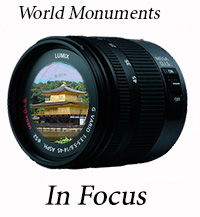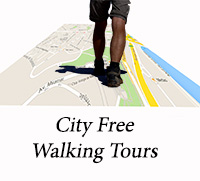.
Gdańsk, sitting on the southern edge of Gdańsk Bay, is the principal port city of Poland and with Gdynia and Sopot forms the metropolitan area called the Tricity (Trójmiasto). Still referred to by Germans as Danzig, the city has had a complicated history, with its position on the dividing line of German and Slavic cultures. The city is a constant source of pride for Poles, recently for being the birthplace of the Solidarity Movement (Solidarność) and the home of the divisive, but undeniably important, Lech Wałęsa. Gdańsk, perhaps due to its turbulent past, retains a unique splendour of Teutonic and Polish influences and is a must for all visitors to Poland’s Baltic coastline.
.
 .
.
The old town revolves around Ulica Długa (Long Street) and Długi Targ (Long Market) a pedestrianised thoroughfare that contains many of the town’s important historical buildings.
As you walk down Ulica Długa, Dom Uphagena (Uphagen House) and Ratusz Główny Miasta (Main Town Hall) sit majestically alongside the restored 17th century style hanseatic buildings. When the road opens up onto Długi Targ, full of cafes and bars, you mustn’t overlook Fontanna Neptuna (Neptune Fountain) a 17th century masterpiece by the Dutch architect Abraham van den Blocke. Złota Kamienica (Golden House) is also a startling building as is the Dwór Artusa (Artus’ Court) which used to be a merchants’ hall and a centre of social life in the city.
.
Evidence of the old city parameters can still be found in the city’s gates. Brama Wyżynna (Upland Gate), Złota Brama (Golden Gate) and Zielona Brama (Green Gate), which formed part of the old city fortifications, can be found near the main thoroughfare. As can the hard to miss Bazylika Mariacka (St. Mary’s Church), the largest brick church in the world. The SS Soldek is anchored in the Motława River, and with Żuraw, an imposing medieval port crane, creates a picturesque hardbourside view at the end of Długi Targ.
.

.
Further along the coast, the Gdańsk Shipyard remains a place of pilgrimage for many Poles. The gates, made famous by Wałęsa, are a great photo oppurtunity. Drogi do Wolności (the Roads to Freedom Museum) situated near the shipyard is worth a visit too, but if you are after hard historical facts you may feel a bit let down. The Polish Post Office also has great significance to Poland as here during the German invasion the post office’s defenders were murdered and buried on the spot after a heroic seven day defence.
Overall, Gdańsk is a unique city with a different vibe to other Polish towns. Industrial yet sophisticated, this summer Gdańsk will have the chance to show off to the world as one of the host cities in this summer’s EURO championships. Hoping that visitors will be won over by its combination of cheap beer, local history and beautiful architecture.
This city guide was also published by Great and Beautiful Poland, Poland Trips, Gdańsk przeprasza za to, że jest taki zajebisty and The Best of Poland on 3rd June and by Gdansk Football Camp 2012 and Wspólnota Gdańska on 4th June 2012.
Visit our Poland country guide for more information!
written by: Jon














































It’s definitely a city with the X-factor – lots for history buffs but really modern and fun too. I’m surprised it hasn’t got a bigger profile as a tourist destination.
Thanks for your comment! Gdańsk definitely deserves more recognition!
YES of course!